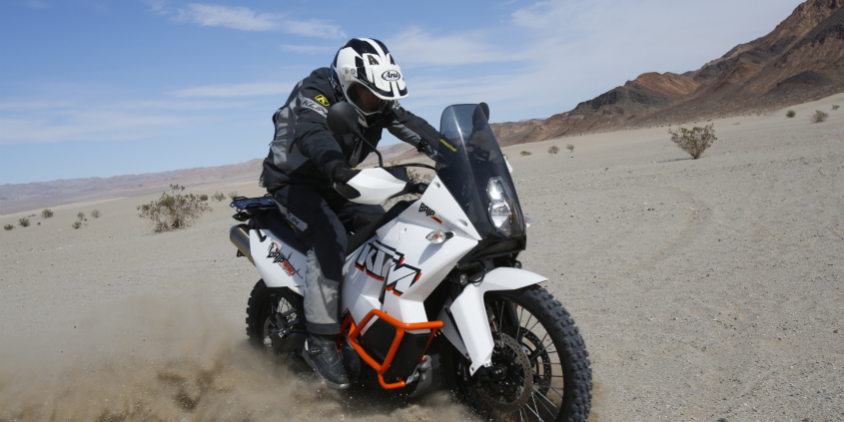Riding Tip: Front Brake–100% of your stopping power.
If there is one step to becoming a better and safer rider it involves learning to slow down quicker. That technique determines how fast you can go and also how well you can avoid bad situations. For proper braking, it involves a lot more than quickly grabbing the lever. There are things you have to take into consideration, many that you may have never considered.
We teach in a very idealized way. Our goal is to teach you all the components that you need to ride safe and efficient. This method of teaching allows you to take the lessons and focus on the skill needed for any condition, not just the one we train in. In this newsletter, we are focusing on braking. The first thing to do is to start thinking about the front brake as your main option for braking and slowing down. Ideally, the front brake is used for 100% of your stopping power, the rear brake is for control only. If a rider is on the front brake properly, the rear wheel of the bike will be very light if not actually off the ground and in the air. Does this sound crazy? Is the front brake only for high-level riders? Not at all. It is for everyone, you just have to understand the rules and then practice the technique.
 Rule number one for off-road riding is that all of your braking has to be done in a straight line. No matter how good your tires, you just don’t have the traction and grip to be doing any real slowing down while the bike is turning. Hard braking in a turn will wash out the front end even in excellent traction conditions. Do all your slowing in straight lines. This helps put all of the force and mass of the bike into the front wheel. When the tire is upright it will allow the tread of the tire to have full contact with the terrain, which allows for full braking power. Wait till you are done braking and slowing before trying to do anything else, especially initiating a turn.
Rule number one for off-road riding is that all of your braking has to be done in a straight line. No matter how good your tires, you just don’t have the traction and grip to be doing any real slowing down while the bike is turning. Hard braking in a turn will wash out the front end even in excellent traction conditions. Do all your slowing in straight lines. This helps put all of the force and mass of the bike into the front wheel. When the tire is upright it will allow the tread of the tire to have full contact with the terrain, which allows for full braking power. Wait till you are done braking and slowing before trying to do anything else, especially initiating a turn.
Rule number two is knowing how much grip the front tire has, how much lever pressure you need and also what it feels like when the front wheel locks up. So if it does lock up you can then release the brake enough to get traction again if not just release the brake so you don’t crash. Practicing enough to make the reflex instinctive, especially under stressful conditions can be the difference between crashing and riding away. Practicing this in different soil conditions allows you to become more sensitive and familiar with the “feel” of the traction and how much you need to pull the lever depending on the terrain. This type of practicing will help you become better on your brakes, and will improve your riding ability.
Rule three is to never stab the front brake. Stabbing the front brake will lock the front wheel and you’ll have to release the brake to regain control, so what was the purpose? Using a smooth and deliberate pull of the lever in a very controlled way takes time and practice to get right. Stabbing the brake is one of the most common novice mistakes and the reason so many riders are afraid of the front brake in the first place. They either didn’t learn how to brake properly or they have heard too many horror stories about using the front brake.
The next five to ten steps involve getting your body into the right position so you can further apply the front brake. It is important to know what is going to happen so you can anticipate the next steps to be ready for whatever is going to happen after the braking is done. We have a number of drills that we teach so you can take full advantage of the front brake and then evaluate and improve with practice.







